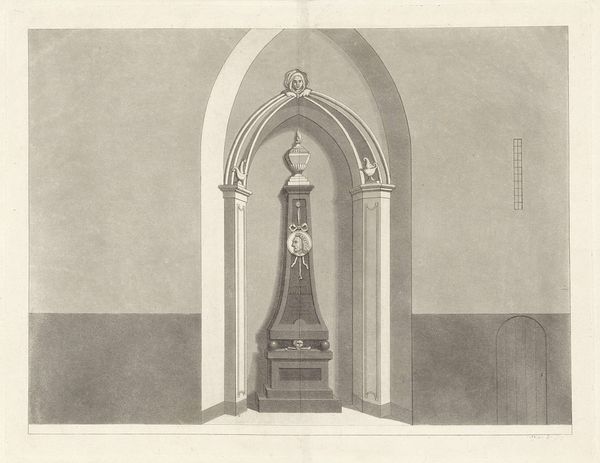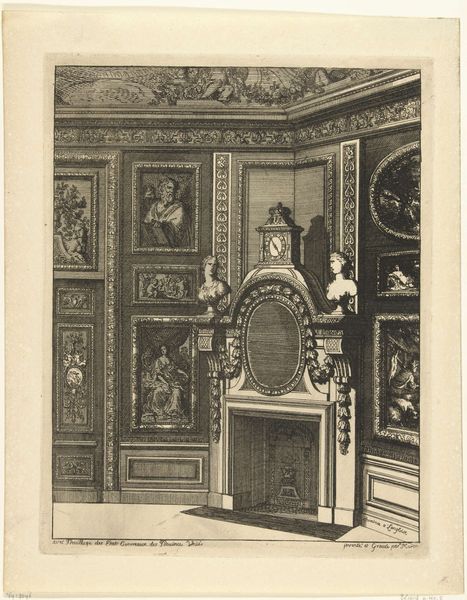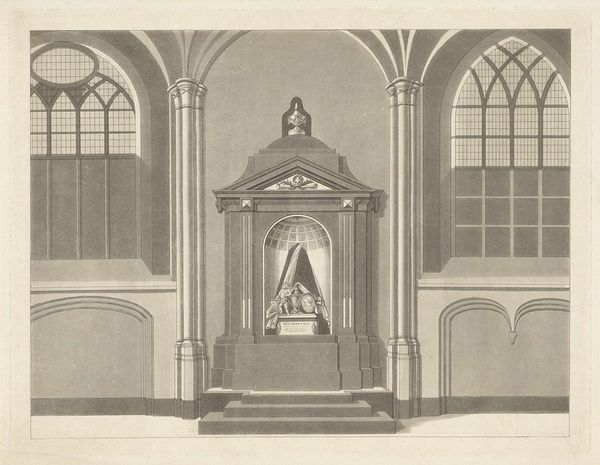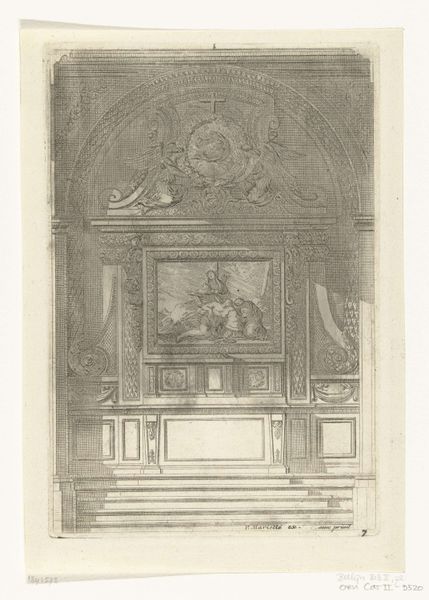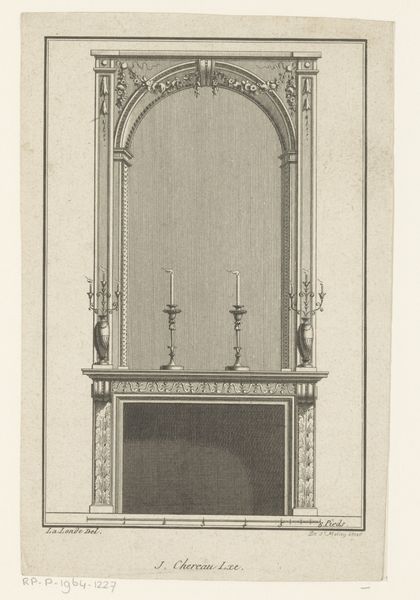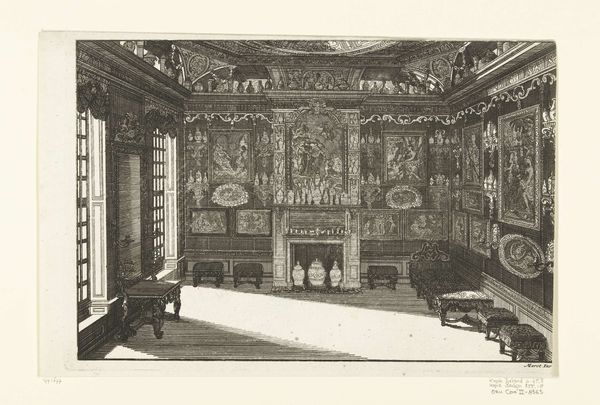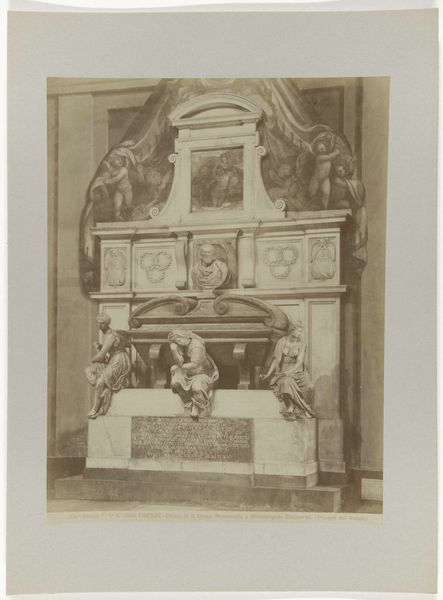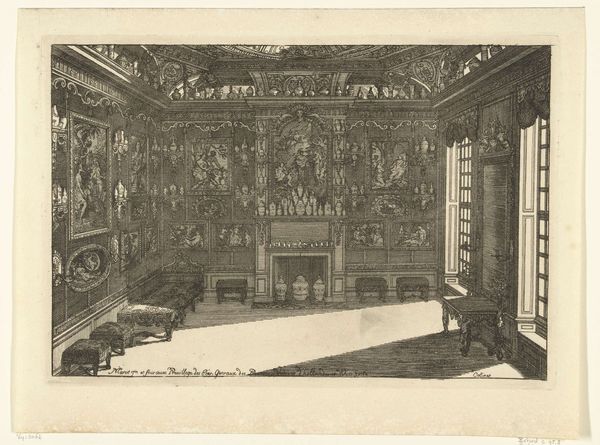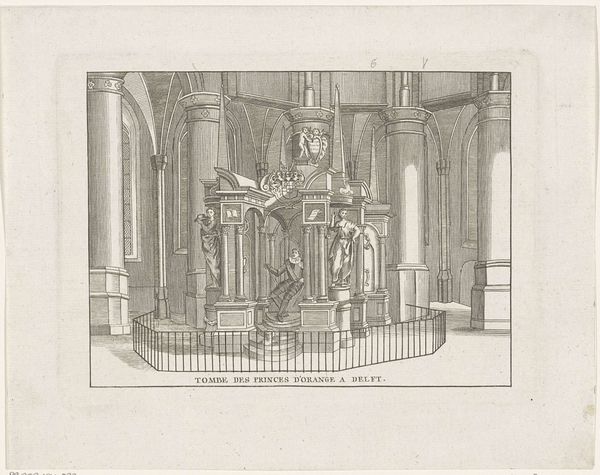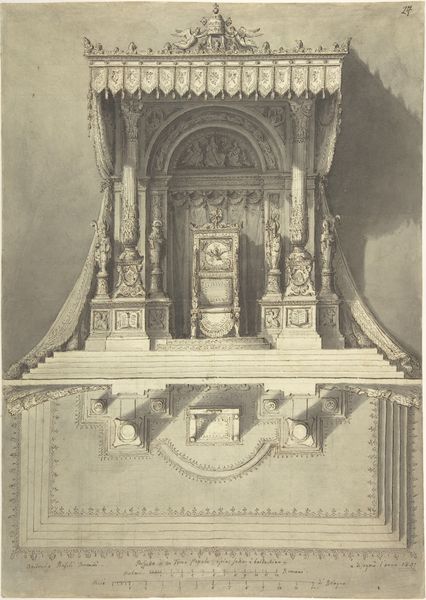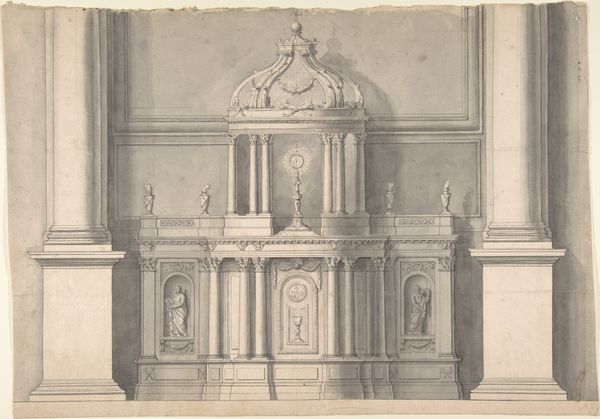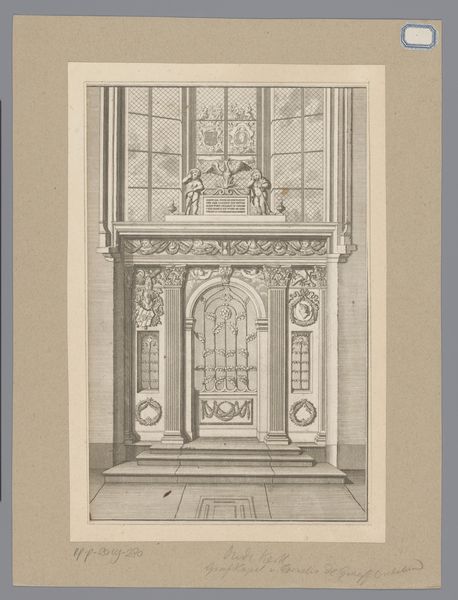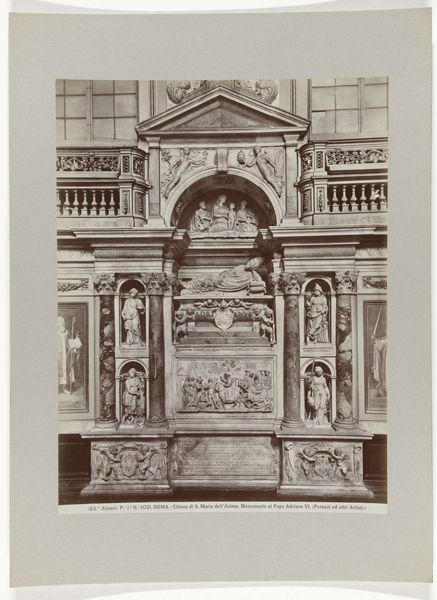
drawing, graphite, engraving
#
portrait
#
drawing
#
neoclacissism
#
graphite
#
history-painting
#
engraving
Dimensions: height 227 mm, width 290 mm
Copyright: Rijks Museum: Open Domain
Curator: Let’s turn our attention to this drawing by Johannes Cornelis Zürcher. It’s called “Grafmonument van Elisabeth van Morgan,” created sometime between 1804 and 1882. Editor: Immediately, I’m struck by the cool, almost severe atmosphere. The precision of the lines and the limited tonal range give it a feeling of solemn monumentality. Curator: Indeed. As a work, “Grafmonument van Elisabeth van Morgan” engages directly with the Neoclassical ideals so prevalent during the 19th century. Zürcher here employs graphite in order to demonstrate a historical theme—he creates a proposed grave for the aristocrat Elisabeth van Morgan. What thoughts arise as you engage the piece's themes and neoclassical elements? Editor: Well, there’s this intriguing tension between the austere architectural setting, all straight lines and right angles, and the implied presence of Elisabeth. The contrast highlights both the permanence of grief and the fleeting nature of human life. The structure reads, to me, like a theater for mourning, and its sharp, gray values emphasizes this mood. Curator: I concur. Observe the monument's design—the sober aesthetic seems intended to portray the social and civic virtues Elisabeth embodies. Notice how this piece utilizes classical structure not to capture the vibrancy of life, but instead, to distill values for later recollection and societal reinforcement. Editor: Thinking historically, the proposed design itself becomes a kind of public statement about the sitter. A family commissions art to preserve the reputation of the sitter and their associated familial line—an act that becomes an engagement with Neoclassical and aristocratic ideas. I also note the engraving lines serve a purpose as it was, and continues to be, a very common process for printing, archiving, and wide scale circulation of this art. Curator: Excellent observations. It brings into sharp relief how choices made in the visual portrayal carry societal implications for cultural narratives and values during Elisabeth's life and the artist’s moment. Editor: Looking at it from both sides—technique, history, Neoclassical movement, theme—truly allows us a richer view. Curator: Agreed. By considering those, we hopefully grant Elisabeth and Johannes a continued voice.
Comments
No comments
Be the first to comment and join the conversation on the ultimate creative platform.
